Ford TC/TD Cortina Review: Aussie Classic
 1974 TD Cortina XLE 250
1974 TD Cortina XLE 250
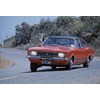
 1972 TC Cortina
1972 TC Cortina
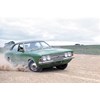
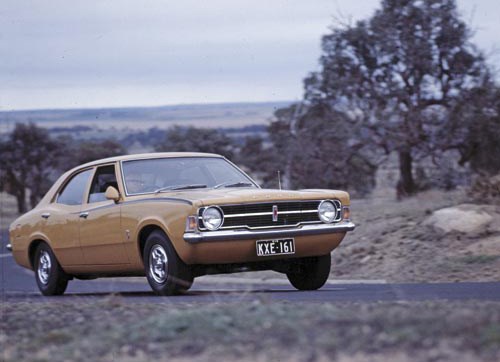 1971 TC Cortina
1971 TC Cortina

 TD Cortina XLE
TD Cortina XLE
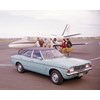
 1971/72 Cortina Interior
1971/72 Cortina Interior

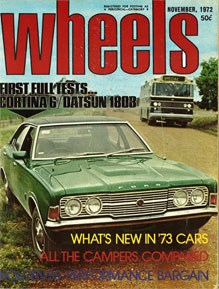 Wheels magazine cover 1972
Wheels magazine cover 1972

 1970 German Taunus GXL
1970 German Taunus GXL
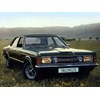
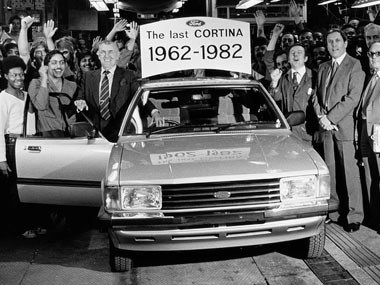 Last UK Cortina
Last UK Cortina






|
|
1974 TD Cortina XLE 250
|

|
|
1972 TC Cortina
|

|
|
1971 TC Cortina
|

|
|
TD Cortina XLE
|

|
|
1971/72 Cortina Interior
|

|
|
Wheels magazine cover 1972
|

|
|
1970 German Taunus GXL
|

|
|
Last UK Cortina
|

|

|
A collaborative effort between Ford's British and German factions, the international 'TC' was beyond salvation for Australia. Joe Kenwright explains.

|
|
Aussie Original: Ford TC/TD Cortina
|
Ford TC/TD Cortina
At its Australian launch in August 1971, Ford's TC Cortina ticked all the boxes. It had polled brilliantly in the clinics, it looked drop-dead gorgeous and Wheels magazine declared that it was the way to the future. Its sharp styling and plush cabin suggested a much more expensive car. But within two years, the Cortina nameplate entered the local lingo as multi-national rubbish. What happened?
Better known as the Mark III Cortina in England, where it remained a runaway success, the TC model code stood for Taunus-Cortina, a clue to the internal turmoil that marred its development. After the Transit van (1965) and Escort (1968) showed that collaborative British and German efforts worked, Detroit decided with some justification that it would no longer fund two totally different cars for the same market segment, in the same region.
Because the German Taunus was a minor player in the German market and the Cortina dominated the British market, many from the British Ford team were not prepared to compromise and jumped. The defection to British Leyland was so pronounced that Ford had to send US personnel over to complete the job. Although the Mk III Cortina's styling is credited to a British designer, the US influence was overbearing, including the protruding centre grille and bonnet section imposed by ex-GM designer 'Bunkie' Knudsen. Making the bonnet, grille and bumper line-up unnecessarily soaked-up development funds and time - even more so on the German Taunus version.
By the time the Cortina was released (October 1970), Knudsen was gone after too many Fords emerged looking like Pontiacs. The benchmark Granada design from the same period provides a clue as to how the Cortina could have looked without the complexity.
Ford was also playing catch-up on the 1965 Chevrolet influence on world car design. After Leo Pruneau's pioneering work at Vauxhall (before he joined Holden) delivered both the HB Viva (Torana) and FE Victor by 1967 (CHECK??), the Cortina, like most Fords at the time, picked up the raised, 'Coke-bottle' hip lines of its GM opposition. Except the Cortina didn't join the styling party until 1970. Like the Knudsen nose, this generated unprecedented problems with panel fit after it generated so many curved surfaces and crease lines that had to match, for a look that was nearly four years old in its home market. Both of these issues would later cause problems in Australia.
In South Africa, where the Mark III Cortina was a big success, and Australia, the TC's styling hit bullseye with the right blend of US and European influences. Australians picked almost immediately that the Cortina had a similar wide-track presence to the $4500 Rambler Hornet, which it would later match with a 4.1-litre six for a fraction of the money.
Because Europe was already heading towards crisp, conservative lines in this segment as defined by the Opel Rekord, Audi 80 and various Fiats, Ford was soon forced to swap the Mark III's exquisite chrome detailing for black plastic to disguise a shape that by 1973 looked too American. In the Australian context, the arrival of these nondescript black plastic grilles across the range coincided with the growing impression that the TC Cortina was cheap and nasty. Along with later emissions engines, these changes hastened the Cortina's downward spiral, instead of reversing it.
In principle, the third-generation Cortina did everything right. Covering the original Cortina segment as a 1.3- or 1.6-litre while plugging the larger Corsair segment as a 2.0-litre was no easy brief. Length was pegged to the Mark II Cortina as the wheelbase grew by 89mm to a useful 2578mm, or just half an inch short of its Vauxhall Victor rival's 2591mm. Yet it was 229mm shorter than the Victor, for much less overhang. Front track grew by 89mm and the rear by 127mm, way beyond the 52mm increase in width. It was also lower (by 52mm) and sleeker, marking the end of the 'boxy' Cortina. Incredibly, the turning circle was pegged to just 10.18 metres, essential if it was to continue as a British rep's dream.
The other big change that should have allowed Ford Australia to trump its LC Holden Torana rival, was the switch from front MacPherson struts to a separate crossmember and double wishbones, along with a fully-located rear axle with coils. A first for a British Ford, some say it was driven by Knudsen's demands for lower, sleeker front styling. Others suggest that the Americans wanted a more isolated, big car feel. The third explanation that it was driven by accountants makes little sense as it would have cost more than struts. Yet former Ford Australia engineers suggest that the warranty claims in this country for incurable wheel shimmy across the British-derived Ford range would have made the switch look cheap.
Until the tyre industry lifted its game and eliminated run-out, the Cortina's new front end was a welcome change, even more so in the Australian context. Sadly, the lack of British experience with this layout was immediately obvious. Travel was way too limited, road shock isolation from the body was woeful, and fundamental geometry flaws caused some scary self-steering effects as soon as one front wheel hit a different surface or camber to the other. All of these shortcomings were amplified on poor or narrow Australian roads and could not be addressed on the production line. The sub-frame and the cheap pressed-steel suspension components were also barely adequate.
Adding the local Falcon sixes with their Aussie transmissions and rear axles were critical to making the Cortina's new, imported four-cylinder OHC engine viable under local content requirements. Ford engineers had to make it work. Ford research supported Holden's findings that there was a strong market for a cheaper and more compact six, but only if it could take the same punishment as a Falcon or Kingswood. The TC Cortina, even without the extra stresses of the big Falcon six, was soon exposed under local pre-production testing as a potential disaster.
Although Ford boxed the firewall to move the Falcon sixes back (they were 229mm longer and 51mm taller than the big 2.0-litre four), the radiator had to be moved forward by 76mm and replaced by a cross-flow type to boost its volume. Extra cooling holes were added under the front bumper.
Even if the TC Cortina's wheelbase was near identical to a six-cylinder Torana's, Holden always dedicated more of the Torana wheelbase to the engine room, which delivered a better-balanced car, even if rear legroom was tighter. Any hopes of the TC Cortina becoming a sought-after local muscle car powered by a hot Falcon six or V8 (as proposed at the time) were dashed after moving the front axle-line forward (as Holden did for the LC/LJ series) became financially unviable.
Ford had no choice but to progressively strengthen almost every suspension and steering component, along with most structural components forward of the rear transmission mount. Suspension ride height had to be raised. Because most changes were also quickly applied to the four-cylinder versions, Ford avoided a repeat of the nightmare durability concerns that plagued the first Falcon. Yet none of this could do more than disguise the inherent flaws in the front suspension travel and geometry, which the extra weight and performance of the Falcon sixes could now expose too easily.
And while Ford's British sales teams were still loudly protesting over the ill-fitting panels from an appearance perspective, chronic dust and water-sealing issues were emerging in Australia that couldn't be fixed under warranty. No matter how sharp an early 1970s Aussie car looked or how comfortable its interior was, if its front end continually bottomed-out or tried to pull the steering wheel out of your hands before it showered you in water or dust, it was time to pull the gun out for a mercy killing.
Unique Cars magazine Value Guides
Sell your car for free right here
Get your monthly fix of news, reviews and stories on the greatest cars and minds in the automotive world.
Subscribe

.jpg)





